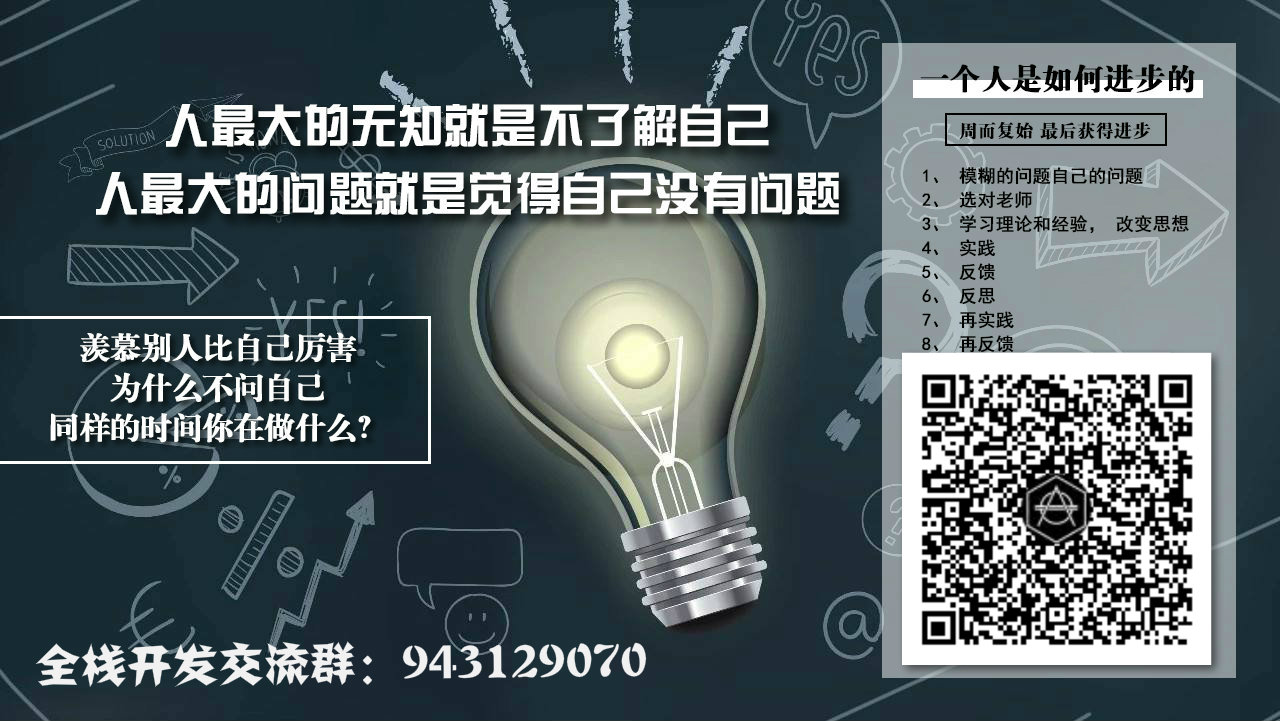这是一个创建于 1988 天前的主题,其中的信息可能已经有所发展或是发生改变。
过滤器可以用在两个地方:双花括号插值和 v-bind 表达式 (后者从 2.1.0+ 开始支持)。过滤器应该被添加在 JavaScript 表达式的尾部,由“管道”符号指示:
<!-- 在双花括号中 --> {{ message | capitalize }}
<!-- 在 `v-bind` 中 -->
<div v-bind:id="rawId | formatId"></div>
创建过滤器的方式
- Vue.filter('id',function(){}) 全局过滤器定义
- 组件中 filters : { 'id' : function(){} } 组件内部过滤器
源码分析
一、编译阶段
parse 阶段
我们发现对于过滤器的使用方式有两种:
- 在属性中 v-bind:id="xxx | filterA"
- 在文本双花括号插值中 {{xxx | filterA | filterB(arg1,arg2)}}
1. 属性中 v-bind:id="xxx | filterA"
在 parse 处理开始节点的 processAttrs() 中发现了 通过 bindRE.test(name)去匹配响应式的属性,然后通过 parseFilters(value) 去解析值中的过滤器。
if (bindRE.test(name)) { // v-bind
// 获取属性的名称 移除 : | v-bind:
name = name.replace(bindRE, '')
// 处理 value 解析成正确的 value
value = parseFilters(value)
isProp = false
}
compiler\parser\filter-parser.js
/**
* 表达式中的过滤器解析 方法
* @param {*} exp
*/
export function parseFilters(exp: string): string {
// 是否在 ''中
let inSingle = false
// 是否在 "" 中
let inDouble = false
// 是否在 ``
let inTemplateString = false
// 是否在 正则 \\ 中
let inRegex = false
// 是否在 {{ 中发现一个 culy 加 1 然后发现一个 } culy 减 1 直到 culy 为 0 说明 { .. }闭合
let curly = 0
// 跟{{ 一样 有一个 [ 加 1 有一个 ] 减 1
let square = 0
// 跟{{ 一样 有一个 ( 加 1 有一个 ) 减 1
let paren = 0
//
let lastFilterIndex = 0
let c, prev, i, expression, filters
for (i = 0; i < exp.length; i++) {
prev = c
c = exp.charCodeAt(i)
if (inSingle) {
// ' \
if (c === 0x27 && prev !== 0x5C) inSingle = false
} else if (inDouble) {
// " \
if (c === 0x22 && prev !== 0x5C) inDouble = false
} else if (inTemplateString) {
// `
if (c === 0x60 && prev !== 0x5C) inTemplateString = false
} else if (inRegex) {
// 当前在正则表达式中 /开始
// / \
if (c === 0x2f && prev !== 0x5C) inRegex = false
} else if (
// 如果在 之前不在 ' " ` / 即字符串 或者正则中
// 那么就判断 当前字符是否是 |
// 如果当前 字符为 |
// 且下一个(上一个)字符不是 |
// 且 不在 { } 对象中
// 且 不在 [] 数组中
// 且不在 () 中
// 那么说明此时是过滤器的一个 分界点
c === 0x7C && // pipe
exp.charCodeAt(i + 1) !== 0x7C &&
exp.charCodeAt(i - 1) !== 0x7C &&
!curly && !square && !paren
) {
/*
如果前面没有表达式那么说明这是第一个 管道符号 "|"
再次遇到 | 因为前面 expression = 'message '
执行 pushFilter()
*/
if (expression === undefined) {
// first filter, end of expression
// 过滤器表达式 就是管道符号之后开始
lastFilterIndex = i + 1
// 存储过滤器的 表达式
expression = exp.slice(0, i).trim()
} else {
pushFilter()
}
} else {
switch (c) {
case 0x22:
inDouble = true;
break // "
case 0x27:
inSingle = true;
break // '
case 0x60:
inTemplateString = true;
break // `
case 0x28:
paren++;
break // (
case 0x29:
paren--;
break // )
case 0x5B:
square++;
break // [
case 0x5D:
square--;
break // ]
case 0x7B:
curly++;
break // {
case 0x7D:
curly--;
break // }
}
if (c === 0x2f) { // /
let j = i - 1
let p
// find first non-whitespace prev char
for (; j >= 0; j--) {
p = exp.charAt(j)
if (p !== ' ') break
}
if (!p || !validDivisionCharRE.test(p)) {
inRegex = true
}
}
}
}
if (expression === undefined) {
expression = exp.slice(0, i).trim()
} else if (lastFilterIndex !== 0) {
pushFilter()
}
// 获取当前过滤器的 并将其存储在 filters 数组中
// filters = [ 'filterA' , 'filterB']
function pushFilter() {
(filters || (filters = [])).push(exp.slice(lastFilterIndex, i).trim())
lastFilterIndex = i + 1
}
if (filters) {
for (i = 0; i < filters.length; i++) {
expression = wrapFilter(expression, filters[i])
}
}
return expression
}
解析过滤器的方法其实很简单:
- 将属性的值从前往后开始一个一个匹配,关键符号 : "|" 并排除 ""、 ''、 ``、 //、 || (字符串、正则)中的管道符号 '|' 。
如:
<div v-bind:id="message + 'xxx|bbb' + (a||b) + `cccc` | filterA | filterB(arg1,arg2)"></div>
字符一个一个往后匹配 如果发现 ` " ' 说明在字符串中,那么直到找到下一个匹配的才结束, /一样 同时 匹配 () {} [] 这些需要两边相等闭合 那么 | 才有效, 最后一个条件排除 || 即可
- 所以上面直到遇到 第一个正确的 | ,那么前面的表达式 并存储在 expression 中,后面继续匹配再次遇到 | ,那么此时 expression 有值, 说明这不是第一个过滤器 pushFilter() 去处理上一个过滤器
/**
生成过滤器的 表达式字符串
如上面的
exp = message
filters = ['filterA','filterB(arg1,arg2)']
第一步 以 exp 为入参 生成 filterA 的过滤器表达式字符串 _f("filterA")(message)
第二步 以第一步字符串作为入参 生成第二个过滤器的表达式字符串 _f("filterB")(_f("filterA")(message),arg1,arg2)
=> _f("filterB")(_f("filterA")(message),arg1,arg2)
* @param {string} exp 上一个过滤器的值 没有就是 表达式的值
* @param {string} filter
* @returns {string}
*/
function wrapFilter(exp: string, filter: string): string {
// 判断是否存在入参, 即 'filterB(arg1,arg2)'
const i = filter.indexOf('(')
if (i < 0) {
// 如果不是 直接生成 "_f("filterA")(message)"
// _f: resolveFilter
return `_f("${filter}")(${exp})`
} else {
// 过滤器名称
const name = filter.slice(0, i)
// 过滤器自定义入参
const args = filter.slice(i + 1)
// 生成 "_f("filterB")(message,arg1,arg2)"
return `_f("${name}")(${exp}${args !== ')' ? ',' + args : args}`
}
}
此时 exp = message + 'xxx|bbb' + (a||b) + cccc , filter = filterA
- 继续判断 过滤器是否存在 (), 此时不存在, 那么 filter 就是名称 第一个入参就是前面的 exp。
生成
"_f("filterA")(message + 'xxx|bbb' + (a||b) + `cccc`)"
- 以前面的结果为 exp , 发现存在 ( , 然后生成
"_f("filterB")(_f("filterA")(message + 'xxx|bbb' + (a||b) + `cccc`),arg1,arg2)"
2. 文本双花括号插值中 {{ message | capitalize }}
文本的处理是在 parse 中的 chars()方法 其中存在一个解析 {{}} 的方法 parseText()
export function parseText(
text: string,
delimiters ? : [string, string]
): TextParseResult | void {
// 处理 文本内容 如:
// {{obj.name}} is {{obj.job}}
while ((match = tagRE.exec(text))) {
// ' {{obj.name}} is {{obj.job}} ' => [ 0: '{{obj.name}}' , 1: 'obj.name' ,index : 1, input: ' {{obj.name}} is {{obj.job}} ']
// match.index 获取当前匹配的 开始下标
index = match.index
// push text token
// 如果 {{ }}的前面存在 静态的文本 如 (空格..{{xx}} xxx {{}})那么需要将这些静态文本保存
if (index > lastIndex) {
rawTokens.push(tokenValue = text.slice(lastIndex, index))
// 将静态文本保存在 tokens
tokens.push(JSON.stringify(tokenValue))
}
// tag token
// 解析过滤器
const exp = parseFilters(match[1].trim())
//生成当前参数在 Vue render 中获取响应式数据的方法 _s('obj.name') => this['obj.name']
tokens.push(`_s(${exp})`)
}
}
发现 其也是通过 const exp = parseFilters(match1.trim()) 去处理 {{}}中的额过滤器。
render 阶段
我们发现在编译节点如果遇到过滤器 会将其编译成 _f(){}的表达式
"_f("filterB")(_f("filterA")(message + 'xxx|bbb' + (a||b) + `cccc`),arg1,arg2)"
core\instance\render-helpers\resolve-filter.js
/**
* Runtime helper for resolving filters
*/
export function resolveFilter (id: string): Function {
return resolveAsset(this.$options, 'filters', id, true) || identity
}
其还是通过 resolveAsset 去获取 vm.$options 的 filters 中相同的过滤器

然后将 _f("filterA")(message + 'xxx|bbb' + (a||b) + cccc ),arg1,arg2 作为入参。

目前尚无回复